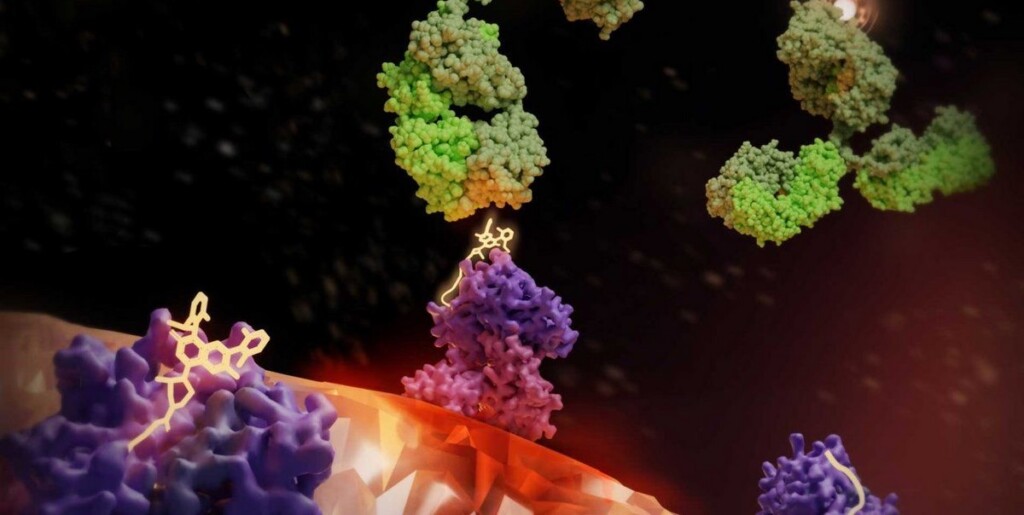Previously Failed Cancer Drug Repurposed to Act as ‘Flag’ for Cancer-Seeking Nuclear Missile

Research into a cancer treatment over 10 years in the making has born remarkable fruit with the juicy potential to greatly improve existing radiation therapy.
Throughout the 21st century, GNN has reported on how cancer research has broadened, expanded, become more precise and more forgiving on non-cancerous cells, and even shown how cancer may be beaten without ever needing to be fought.
From the days of chemo and radiation therapy that often left patients exhausted, hairless, and unable to retain weight, there are now many more options that are increasing survival rates while diminishing side effects.
In 2013, UC San Francisco researcher Kevan Shokat was looking to end a 30-year wait for a method to target the biggest cellular driver of tumor growth, known as KRAS. This protein, when mutated, causes unlimited cell proliferation, allowing small tumors to balloon, and come raging back if shrunk.
Shokat succeeded by developing a drug that targeted only the mutated version of KRAS, present in nearly one-third of all cancers, but which is even more prevalent in lung, pancreatic, and colon cancer tumors.
However, his discovery of how to target KRAS never matured into a surefire way of destroying it—future experiments showed how tumors that lost KRAS proteins would come back again.
“We suspected early on that the KRAS drugs might serve as permanent flags for cancer cells,” Charly Craik, PhD, a professor of pharmaceutical chemistry at UCSF and co-senior author of the study, told UCSF Press.
Craik, with Shokat on his team, has now used the already FDA-approved drug called sotorasib to flag KRAS-containing tumors and then unleashed a radioactive antibody to seek out and bind to them, with the sotorasib acting as a waypoint.
MORE EXCITING RESEARCH: New Solution for Metastatic Ovarian Cancer Based on Approach From Nearly a Century Ago Shrinks Tumors
“This is a one-two punch,” said Craik. “We could potentially kill the tumors before they can develop resistance.”
“The beauty of this approach is that we can calculate an extremely safe dose of radiation. Unlike external beam radiation, this method uses only the amount of radiation needed to beat the cancer.”
OTHER CANCER KILLERS: New Cervical Cancer Treatment Regime Shows ‘Biggest Gain in Survival Since 1999’
There are several ways in which an individual’s cells are coded to display sotorasib, and developing antibodies to respond precisely to this individuality would be a key step to seeing this intervention in a hospital near you; but unlike experimental drugs, sotorasib is already FDA-approved.
The radioactivity of the antibody comes from the isotope zirconium-89, which is already used in a medical imaging technology called Positron Emission Tomography, often called a PET scan, which uses it in the same way that Craik used it—by embedding it inside an antibody.
SHARE The Forty-Year Fruits Of These Scientists’ Labors With Your Friends…
>read more at © GoodNews
Views: 0